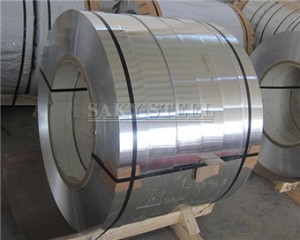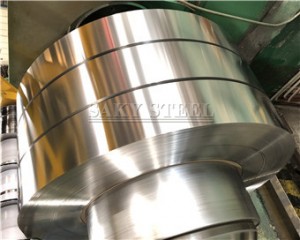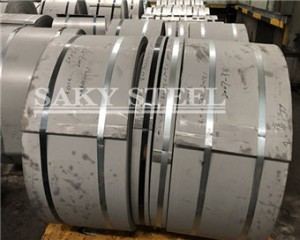Stainless steel strips 309 and 310 are both heat-resistant austenitic stainless steel alloys, but they have some differences in their composition and intended applications.309: Offers good high-temperature resistance and can handle temperatures up to around 1000°C (1832°F). It is often used in furnace parts, heat exchangers, and high-temperature environments.310: Provides even better high-temperature resistance and can withstand temperatures up to around 1150°C (2102°F). It’s suitable for applications in extreme heat environments, such as furnaces, kilns, and radiant tubes.
Chemical Composition
| Grades | C | Si | Mn | P | S | Cr | Ni |
| 309 | 0.20 | 1.00 | 2.00 | 0.045 | 0.03 | 22.0-24.0 | 12.0-15.0 |
| 309S | 0.08 | 1.00 | 2.00 | 0.045 | 0.03 | 22.0-24.0 | 12.0-15.0 |
| 310 | 0.25 | 1.00 | 2.00 | 0.045 | 0.03 | 24.0-26.0 | 19.0-22.0 |
| 310S | 0.08 | 1.00 | 2.00 | 0.045 | 0.03 | 24.0-26.0 | 19.0-22.0 |
Mechanical Property
| Grades | Finish | Tensile strength, min,Mpa | Yield strength, min,Mpa | Elongation in 2in |
| 309 | Hot finished/Cold finished | 515 | 205 | 30 |
| 309S | ||||
| 310 | ||||
| 310S |
Physical Properties
| SS 309 | SS 310 | |
| Density | 8.0 g/cm3 | 8.0 g/cm3 |
| Melting Point | 1455 °C (2650 °F) | 1454 °C (2650 °F) |
In summary, the primary differences between stainless steel strips 309 and 310 lie in their composition and temperature resistance. 310 has a slightly higher chromium and lower nickel content, making it better suited for even higher temperature applications than 309. Your choice between the two would depend on the specific requirements of your application, including temperature, corrosion resistance, and mechanical properties.
Post time: Aug-07-2023


